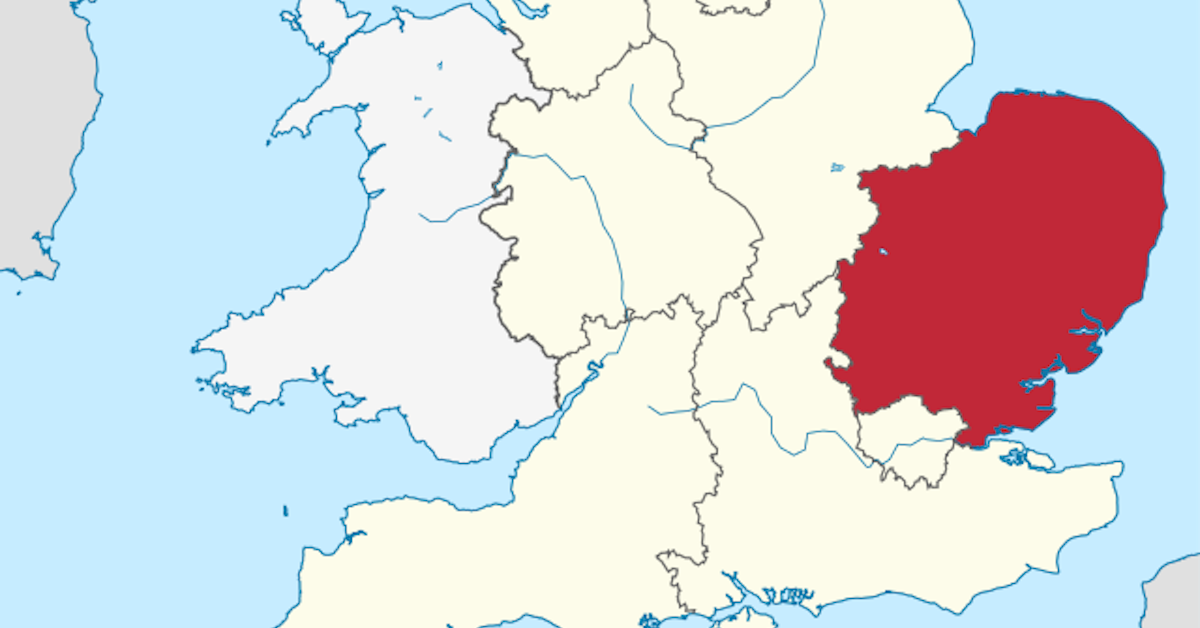Exclusive comment was written by Leah Tomkins who works for DevComms and is based in their Cambridge office working across the East of England.
With manifestos published and the general election fast approaching, the East of England appears to be poised to deliver a series of political upsets, with the region now projected to have MPs from five different parties after the next election. The last time this happened was in Northern Ireland in the 1997 election, according to Election Maps UK X.
If we cast our minds back to the 2019 general election, The Conservative Party secured the vast majority of the seats across the region, placing both Labour and the Liberal Democrats at a significant disadvantage starting out this year. Despite this, both parties are confident there is an opportunity for remarkable gains within the East of England, recognising the additional challenges coming from Reform UK, Green Party and the Independents who are also targeting the region.
The redrawing of constituency boundaries has increased the number of constituencies in the East of England from 58 to 61, with the addition of Waveney Valley, St Neots and Mid Cambridgeshire and Harpenden and Berkhamsted. Had the 2019 election been conducted under these new boundaries, it has been calculated that the Conservatives would have won 55 seats, Labour five and the Liberal Democrats one.
The Waveney Valley constituency is anticipated to be a key battleground in the upcoming general election. The newly formed constituency, resulting from a boundary review, spans two counties, with 60% of it being in north Suffolk, remaining 40% in south Norfolk.
Waveney Valley is the most rural constituency in the region and features small market towns, villages and farmland making it prime Conservative territory, resulting in many considering Conservative candidate, Richard Rout, as the front runner. The Green Party have performed well in local elections in Suffolk and in Norfolk at two recent by-elections – one of which was for the Bunwell ward at South Norfolk District Council, which the Greens won from the Conservatives by 10 votes. This recent success has prompted it to be one of the party’s top targets, with Green Party Co-Leader Adrian Ramsay running as candidate.
Although national polling has identified Labour’s candidate Gurpreet Padda as the main challenger to the Conservatives for this seat, there is visibly stronger support for the Green Party on the ground suggesting this will be a seat to watch on the 4th of July.
One of the most closely monitored races in the region is in Clacton, where in the last two weeks, Reform Party leader Nigel Farage has announced he is running. His announcement marks his eighth attempt to secure an MP seat. At this year’s election, he faces eight other contenders which includes Conservative incumbent Giles Watling, who won the seat in 2017 and 2019.
As the Reform Party, which was formerly known as the Brexit Party, did not contest this seat in 2019, there is no data to indicate the swing required for a Reform victory in Clacton. Clacton is a seaside area which includes Jaywick, which is consistently measured to be one of the most deprived areas in the UK. Clacton is a once thriving seaside town which has suffered from decline over the past decades.
The Liberal Democrats will aim to retain their sole seat in the region, St Albans, and seek to gain some additional seats with Cambridgeshire South ranked fifth on the party’s target list. The party has hopes of capitalising further in Cambridgeshire by taking Ely and East Cambridgeshire and new seat, St Neots and Mid-Cambridgeshire. Despite their hopes of capitalising on additional seats in Cambridgeshire, the likelihood of a Liberal Democrat win in these constituencies is slim. What is important to acknowledge, however, is that the Liberal Democrats do pose a challenge with regards to these seats making them a three horse race instead of two, therefore making the outcomes more difficult to predict.
There are several Labour-held seats, where Labour’s position on Gaza has been controversial and they have been described by the party’s website as “battleground areas”. This was most notably seen in the local election results in Oldham recently. The impact of Independent candidates standing in the two Luton seats, Luton North and Luton and South Bedfordshire, is unknown but both Labour candidates have had to resign from Shadow Cabinet positions in order to differentiate themselves from the party Leadership on Gaza recently.
The upcoming general election in the East of England promises to be a battleground of shifting political landscapes and potential upsets. With a redrawn map and increased constituencies, the region is set to host a diverse array of candidates from multiple parties vying for victory. Traditional strongholds like the Conservatives face challenges from Labour, the Liberal Democrats, and emergent forces such as the Green Party and Reform UK. Key battlegrounds like Waveney Valley and Clacton exemplify this dynamic, with significant contests expected. As parties strategise and campaigns intensify, local issues, candidate dynamics, and national policies will all play pivotal roles in determining the outcome on election day, making the East of England a region to watch closely on 4th of July.











